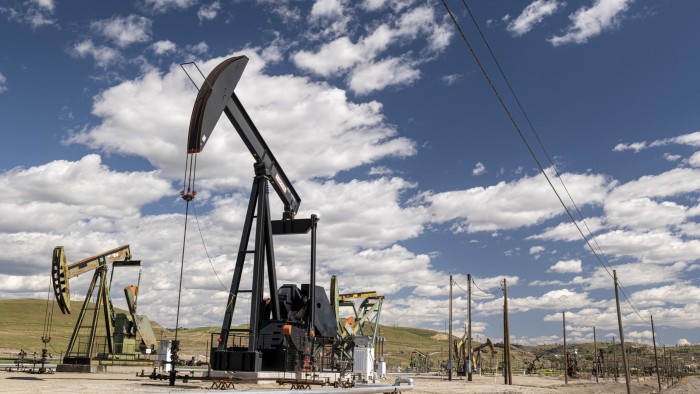Stay informed with free updates
Simply sign up to the Oil myFT Digest — delivered directly to your inbox.
The International Energy Agency has said it expects global oil demand to grow at the slowest pace since 2009, outside of the coronavirus pandemic, amid early signs that US tariffs are weighing on economic activity.
The energy advisory body said it expected consumption to increase by only 700,000 barrels a day this year. That would be the smallest rise in annual demand since the aftermath of the global financial crisis, with the exception of 2020 when demand contracted by 8.7mn b/d as governments shut key parts of the economy in order to contain the spread of Covid-19.
In its monthly oil market report, the IEA said it had trimmed its forecast from a previous growth estimate of 720,000 b/d, after lower than expected demand in the second quarter of the year, particularly in emerging markets.
While the slowdown in growth in the past three months was “partly weather related”, the IEA also flagged the impact of the economic uncertainty created by US President Donald Trump’s surprise tariffs on many trading partners.
“Although it may be premature to attribute this slower growth to the detrimental impact of tariffs manifesting themselves in the real economy, the largest quarterly contractions occurred in countries that found themselves in the crosshairs of the tariff turmoil,” it said.
Those countries included China, Japan, Korea and Mexico, where oil demand had fallen year-on-year by 160,000 b/d, 80,000 b/d, 70,000 b/d and 40,000 b/d respectively. In the US, oil demand was down 60,000 b/d, while Europe and emerging markets outside Asia had proved to be “more resilient”, it added.
The IEA’s forecast puts it at odds with the Opec+ oil cartel, which has predicted demand will grow by 1.3mn b/d this year. The two groups have increasingly been at loggerheads in recent years because of their diverging expectations of future demand, with Opec leaders even directly criticising the IEA for alleged political bias.
Since April, Opec+ members have been unwinding long-standing production cuts originally designed to push prices higher, arguing that demand was strong enough to absorb the additional supply.
Global oil production was 2.9mn b/d higher in June than a year earlier, the IEA said in the report, adding that 1.9mn b/d of that increased supply had come from Opec+ members.
Given Opec+ is still unwinding cuts, world oil supply is forecast to rise by 2.1mn b/d this year to 105.1mn b/d, outstripping demand of 103.7mn b/d, it added.
Most traders expect that surplus to weigh on prices in the second half of the year, with some analysts forecasting Brent crude, the global benchmark, to fall below $60 a barrel in the fourth quarter.
On Friday morning Brent was trading at $68.80 per barrel, up 0.2 per cent.
https://www.ft.com/content/41a959fc-dc1a-402c-9b97-ae1cc2cb7078


